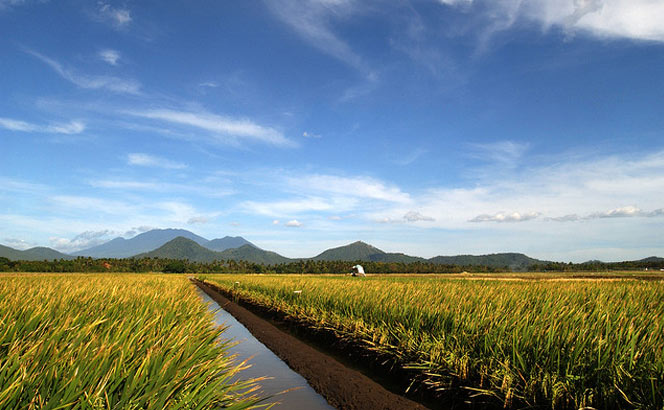More carbon dioxide in the atmosphere and rising temperatures cause rice agriculture to become a larger source of the potent greenhouse gas methane, new research published in Nature Climate Change reveals.
“Our results show that rice agriculture becomes less climate friendly as our atmosphere continues to change,” said Kees Jan van Groenigen, research fellow at the Botany Department at the School of Natural Sciences, Trinity College Dublin, and lead author of the study.
“This is important, because rice paddies are one of the largest human-made sources of methane, and rice is the world’s second-most produced staple crop.”
The researchers—including co-authors Bruce Hungate, professor of biology at Northern Arizona University, and Chris van Kessel, professor at the University of California-Davis—gathered all published research to date from 63 different experiments on rice paddies, mostly from Asia and North America.
The common theme in the experiments was that they measured how rising temperatures and extra carbon dioxide in the atmosphere affect rice yields and the amount of methane that is released by rice paddies.
The research team used a technique called meta-analysis, a statistical tool for finding general patterns in a large body of experimental data.
“Two strong patterns emerged when we analyzed all the data,” Hungate said. “First, more CO2 boosted emissions of methane from rice paddies; and second, higher temperatures caused a decline in rice yields.”
Methane in rice paddies is produced by microscopic organisms that respire CO2, like humans respire oxygen. More CO2 in the atmosphere makes rice plants grow faster, and the extra plant growth supplies soil microorganisms with extra energy, pumping up their metabolism. Increasing CO2 levels also will boost rice yields, but to a smaller extent than methane emissions.
As a result, the research found, the amount of methane emitted per kilogram of rice yield will increase.
“Together, higher CO2 concentrations and warmer temperatures predicted for the end of this century will about double the amount of methane emitted per kilogram of rice produced,“ said van Kessel. “Because global demand for rice will increase further with a growing world population, our results suggest that without additional measures, the total methane emissions from rice agriculture will strongly increase.”
However, the authors point out that there are several options available to reduce methane emissions from rice agriculture. For instance, management practices such as mid-season drainage and using alternative fertilizers have been shown to reduce methane emissions from rice paddies.
Moreover, by switching to more heat-tolerant rice cultivars and by adjusting sowing dates, yield declines due to temperature increases can largely be prevented, thereby reducing the effect of warming on methane emissions per yield.
“These findings, together with our own results, really stress the need for mitigation and adaptation measures to secure global food supply, while at the same time keeping greenhouse gas emissions in check,” van Groenigen said.
The study also caught the attention of The New York Times, where it was featured in a blog post.



